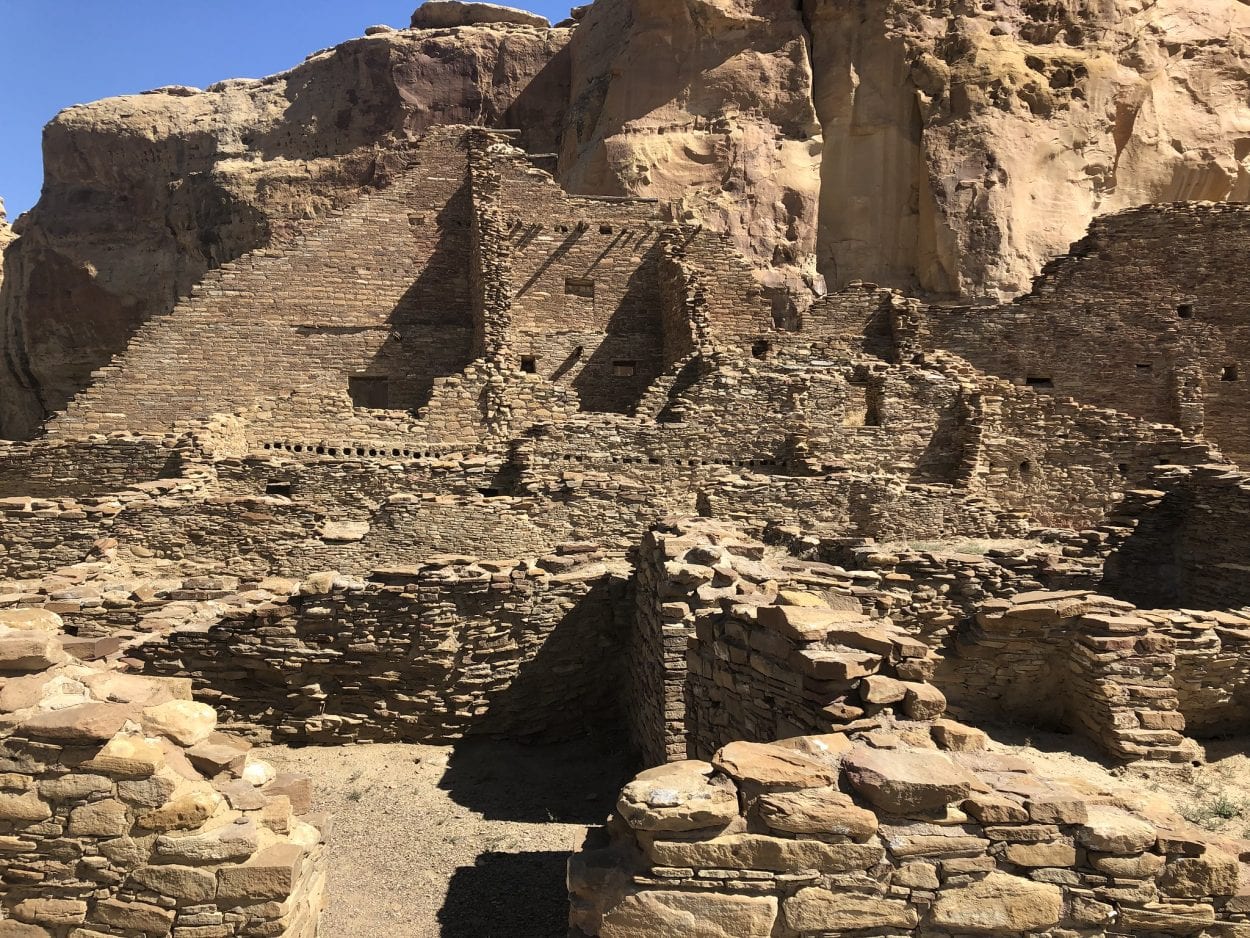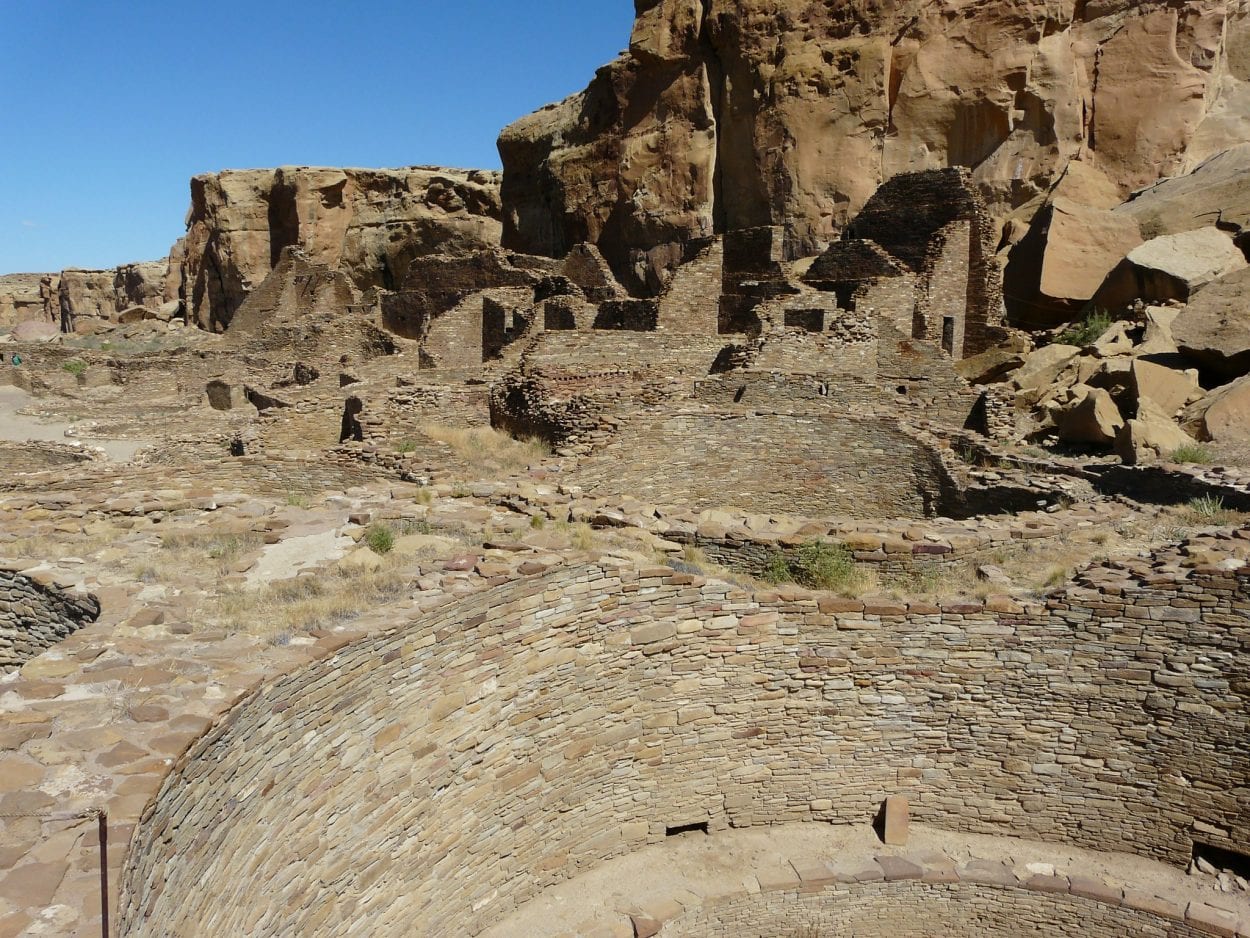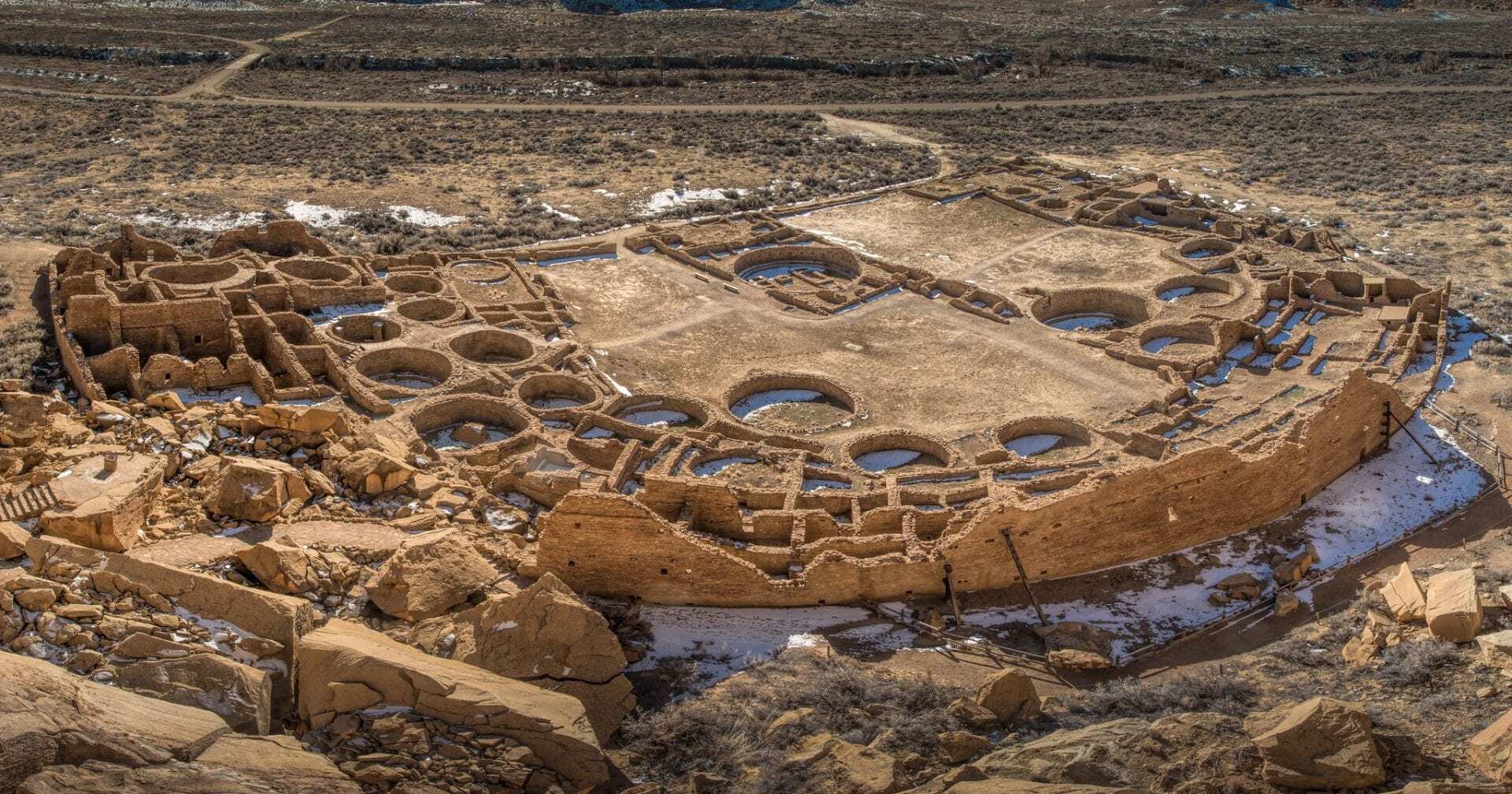Pueblo Bonito is an archaeological site and Puebloan “Great House”, located in modern-day New Mexico, in the United States.
The Puebloans or Pueblos, were an ancient Native American culture that developed a series of major construction projects across Utah and parts of Arizona, New Mexico, and Colorado.
The Chaco Canyon in New Mexico is one of the most concentrated centres of Puebloans culture (defined locally as the Chacoans) that built immense complexes known as “great houses”.
Pueblo Bonito is the largest example of a “great house” that was planned and constructed in stages between AD 850 to AD 1150. The site covers an area of 3 acres, consisting of 800 rooms that are divided into two sections by a precisely aligned wall.

Either side of the complex is a large Kiva (a dedicated room used by Puebloans for rites and political meetings, many of them associated with the kachina belief system) as well as over thirty other kivas or ceremonial structures within the wider complex.
Archaeologists have found traces of Mexican cacao in pottery sherds excavated at the site which were imported to Pueblo Bonito from Central America over 1200 miles away for use in rituals. Also imported were Cylindrical pottery jars from the same region which suggests a complex trade network existed that predates the Spanish conquest of Central and South America.
Neither described as a village or a town, the environment was not suited for sustaining a large population and estimates on the number of inhabitants vary. During the 20th century, it was estimated that Pueblo Bonito had thousands of inhabitants, but later studies estimate this to be closer to 800.

The surrounding area was wooded with trees such as ponderosa pines, but researchers believe the area was cleared for construction and fuel. This, coinciding with a drought resulted in the land becoming infertile that meant the inhabitants were no longer able to grow crops to sustain their population. Although not conclusive, it is suggested that this was the reason why Pueblo Bonito was only inhabited for around 300 years until its abandonment.
Pueblo Bonito was most probably known to the Native Americans living in the vicinity, but its rediscovery was in 1849 during a military expedition by Lt. James H. Simpson and his guide, Carravahal who named the site Pueblo Bonito, meaning “beautiful village”.
Header Image Credit : Andrew Kearns – CC BY 2.0





